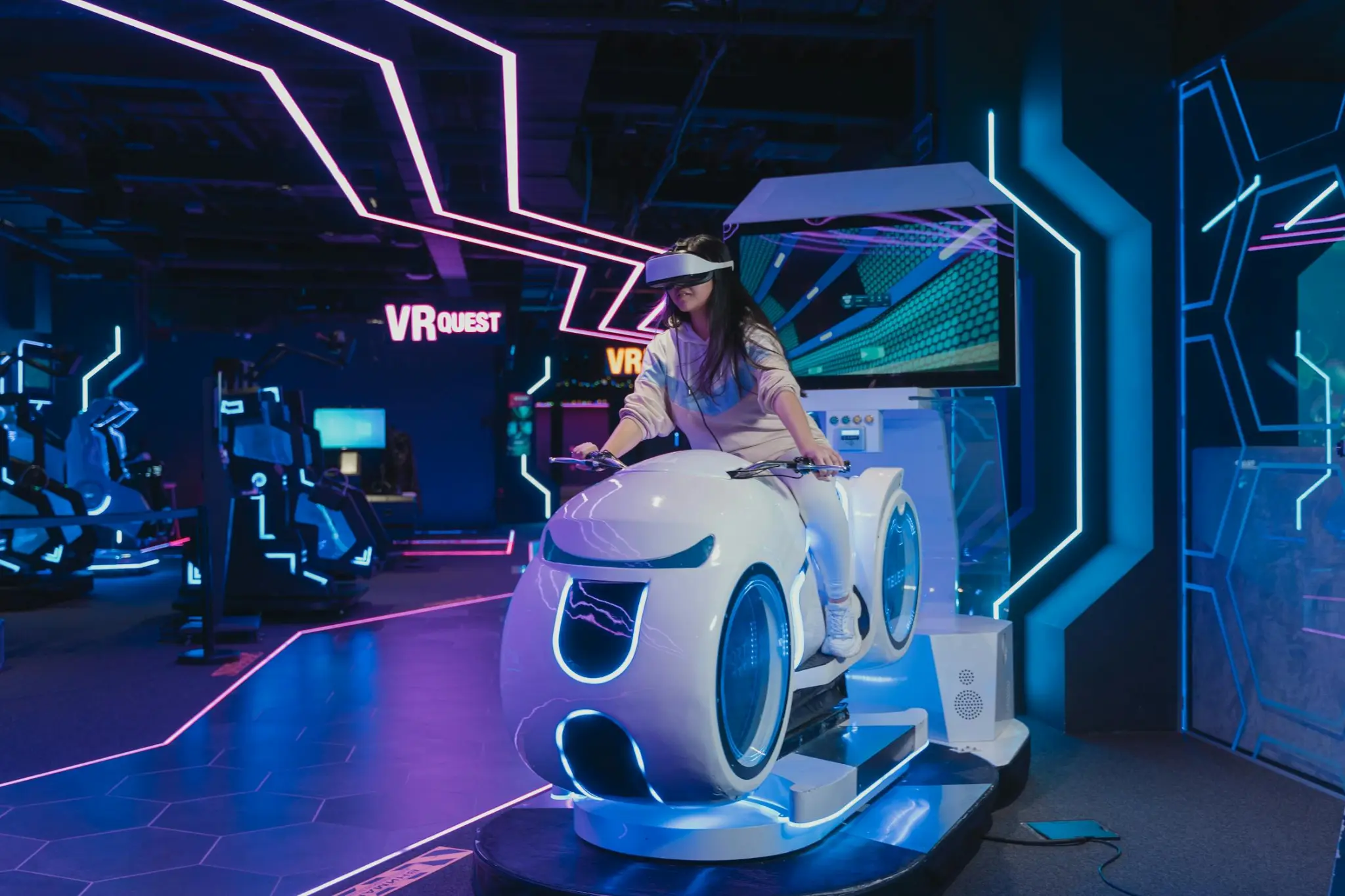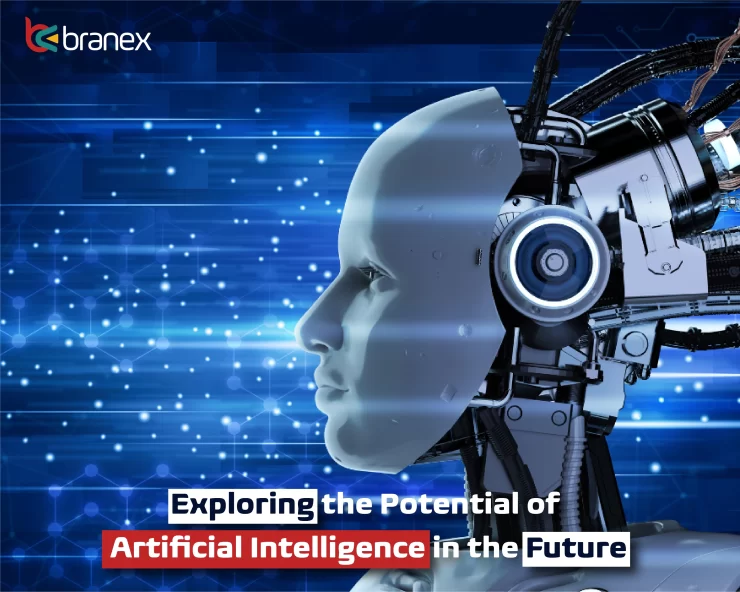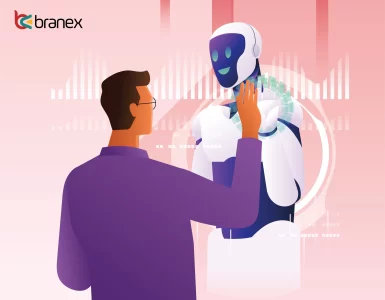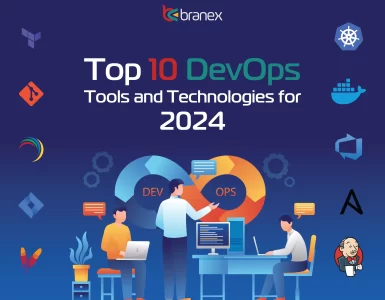Imagine living in a smart home. Have you ever wondered what life is like when you’re residing in a smart home? In such a setting, most home appliances are voice-controlled, and sensors adjust lighting and cooling systems according to the climate. Security systems can detect movement outside and alert residents. All appliances are interconnected and controllable via a smartphone with the help of Artificial Intelligence Technologies. They can even detect vehicles in the driveway and automatically open the garage door.
Artificial intelligence (AI) is transformative. It’s evolving significantly with each passing day. Thanks to concepts like machine learning, deep learning, and natural language processing, the responses of these highly computational machines are becoming increasingly intelligent. Deep learning enables machines to explore deeply, creating new neural links, while natural language processing (NLP) allows machines to interact in a more human-friendly manner.
Today, artificial intelligence takes center stage in almost every technological aspect that we come across. May it be something as simple as taking out our smartphones to search for stuff on the Internet and interacting with personalized recommendations on streaming services to traversing unfamiliar roads with the help of AI-powered GPS?
But where do you think the future will take us? What are the potential benefits of its implementation and what will be its impact in different sectors of the industry?
Let’s explore the history very briefly.
A Brief History of Artificial Intelligence
The story of artificial intelligence (AI) is more than just robots and science fiction movies. It’s a captivating tale of human curiosity, technological leaps, and the constant quest to understand and even replicate intelligence. Let’s embark on a journey through time to explore the fascinating evolution of AI:
Ancient Spark (Before 1950):
The seeds of AI were sown long before computers. In ancient Greece, philosophers like Aristotle pondered the nature of intelligence. Centuries later, in the 17th century, René Descartes famously proposed the idea of “thinking machines“. These early thoughts laid the groundwork for future generations to explore the possibility of artificial minds.
Birth of a Buzzword (1950s):
The 1950s witnessed the dawn of the AI revolution. In 1950, Alan Turing, a brilliant mathematician, proposed the “Turing Test” as a way to gauge a machine’s ability to exhibit intelligent behavior. This test, while debated today, sparked conversation and ignited the field of AI research. The term “artificial intelligence” itself was coined by John McCarthy in 1955, marking the birth of a buzzword that would captivate the world.
Early Strides and Struggles (1960s – 1970s):
This period saw the development of the first AI programs, such as Arthur Samuel’s checkers-playing program in 1952. However, these early attempts were met with both excitement and skepticism. By the late 1960s, limitations in computing power and the complexity of AI problems led to a period of “AI winter“, where funding and enthusiasm waned. In 1969, shaky was the first general-purpose robot built. However, by today’s standard, it was very simple and would perform actions like turning on/off lights & pushing around boxes, and so on.
Learning to Learn (1980s – 1990s):
The 1980s brought a resurgence of interest in AI with the rise of “machine learning“, a technique where machines can learn from data without explicit programming. Expert systems, able to mimic human expertise in specific domains, also gained traction. The 1990s witnessed the invention of the “Support Vector Machine” and the birth of Deep Blue. The chess-playing computer that famously defeated Garry Kasparov in 1997. These advancements showcased the growing power of AI.
The Age of Deep Learning (2000s – Present):
The 21st century ushered in the era of “deep learning“, where artificial neural networks, inspired by the human brain, started achieving remarkable feats. From recognizing faces in photos to generating realistic speech, deep learning algorithms powered a new wave of AI applications. Today, AI is woven into the fabric of our lives, powering everything from self-driving cars and recommendation systems to medical diagnosis and language translation.
What Are the Different Types of Present-World AI?
The Purely Reactive:
It’s the simplest form of AI, reacting solely to the current situation without considering past experiences or future consequences. They function as a reflex action rather than taking into account past experiences. A basic thermostat is a good example. It simply senses the current temperature and turns the heating or cooling system on or off accordingly. It doesn’t remember past readings or anticipate future needs.
The Limited Memory:
The following AI has a limited memory which allows them to learn from recent experiences and apply their short-term pre-learned knowledge to current situations. They react based on short-term history making them slightly more complex than purely reactive AI. For example, a self-driving car with limited memory might use the last few seconds of data on traffic flow to adjust its speed or lane change decision. While it doesn’t have a long-term memory, it can adapt based on immediate surroundings.
Theory of Mind:
Theory of Mind is largely theoretical and refers to AI which can understand and predict the mental states, (beliefs, desires, intentions) of others. Its mind-reading ability allows the AI to interact with humans in more nuanced and socially intelligent ways. In its truest form, the theory of mind AI doesn’t exist yet. However, some advanced chatbot attempts have carved the path to analyzing conversations that are more user behavior-focused and respond accordingly. However, achieving a true understanding of human psychology remains a challenge.
The Self-Aware:
This hypothetical type of AI would possess consciousness and self-awareness. It would be aware of its own existence and its place in the world. This category remains entirely theoretical and highly debated, with ethical and philosophical implications. As of today, there are no real-life examples of self-aware AI. It’s important to remember this category is purely speculative and subject to ongoing scientific and philosophical discussions. Imagine a Sci-Fi futuristic self-aware future generation of machines that are super intelligent, sentient & conscious like the Terminator, Ultron, or Vision.
How AI Technology Will Change the Future?
Personalized Learning:

Imagine a future classroom where your virtual tutor isn’t a one-size-fits-all program. But a dynamic AI system that understands your learning style, strengths, and weaknesses. This can be achieved through AI algorithms analyzing your performance in quizzes, your interactions with educational materials, and even your facial expressions. Based on this data, the AI can personalize your learning path by suggesting relevant content, adjusting the difficulty level, and providing targeted feedback, ultimately leading to a more engaging and effective learning experience.
Medical Diagnosis and Treatment:

AI is already making waves in healthcare. Imagine a doctor using AI algorithms to analyze your medical scans alongside their expertise. These algorithms, trained on vast datasets of medical images and patient records, can identify subtle patterns and anomalies that might escape the human eye. This can lead to earlier and more accurate diagnoses, allowing doctors to intervene with personalized treatment plans tailored to your specific needs and medical history. AI can also help predict potential health risks by analyzing your genetic data and lifestyle habits, enabling preventative measures to be taken proactively.
Scientific Discovery:

Scientific research often involves sifting through mountains of data and searching for hidden patterns and connections. AI can act as a powerful collaborator in this process. Imagine researchers in various fields utilizing AI to analyze data from telescopes exploring distant galaxies, DNA sequencing machines unlocking genetic secrets, or environmental sensors monitoring climate change. By sifting through this data at an unprecedented rate and scale, AI can identify previously unseen correlations and patterns, potentially leading to groundbreaking scientific discoveries that would have been difficult or even impossible for humans to uncover alone.
Climate Change Mitigation:

The fight against climate change requires a multifaceted approach, and AI is emerging as a valuable tool. Imagine AI systems analyzing data from weather stations, satellite imagery, and environmental sensors around the globe. This data can be used to predict extreme weather events, track deforestation patterns, and assess the effectiveness of various climate mitigation strategies. By providing real-time insights and long-term forecasts, AI can help scientists, policymakers, and individuals make informed decisions to combat the effects of climate change and work towards a more sustainable future.
Robotics and Automation:

From assembly lines in factories to operating rooms in hospitals, robots are increasingly present in various aspects of our lives. Imagine AI-powered robots that are not just programmed with predefined tasks but can actually learn and adapt to their environments. These robots can continuously improve their performance, make real-time decisions, and collaborate with humans more effectively. This can lead to increased efficiency and productivity in various industries, while also enabling robots to perform tasks that are dangerous or physically demanding for humans, improving safety and well-being in various fields.
Smart Cities and Infrastructure Management:

Visualize a city where traffic lights adapt to real-time traffic flow, waste collection is optimized based on predictive analytics, and the energy consumption is minimized through intelligent grid management. AI can analyze sensor data from various sources in real time, allowing cities to optimize infrastructure usage, reduce energy waste, and improve overall efficiency, leading to a more sustainable and livable urban environment.
Search and Rescue Operations:

Think AI-powered drones and robots assisting in search and rescue missions in disaster zones or remote areas. These AI systems can navigate complex terrains, identify survivors trapped under debris, and even provide medical assistance in dangerous situations. By combining AI with advanced robotics, search and rescue operations can become faster, more efficient, and potentially save more lives.
Agriculture and Food Production:

Percept AI systems analyzing soil conditions, crop health, and weather patterns to optimize farming practices. These systems can suggest the most suitable crops for specific regions, predict potential yield based on real-time data, and even control irrigation systems for efficient water usage. By utilizing AI in agriculture, we can potentially increase food production, reduce waste, and ensure food security for a growing global population.
Entertainment and Gaming:

Wonder AI-powered characters in video games that can adapt to your playing style, respond to your choices and create a more immersive and dynamic gaming experience. AI can also be used to personalize music recommendations, generate movie trailers based on your preferences, or even write scripts for interactive storytelling experiences. This opens exciting possibilities for the future of entertainment, where AI can enhance user engagement and create personalized and interactive experiences.
Decoding the Benefits of Artificial Intelligence
-
Eradicating Human Error:
AI excels at performing tasks with high precision and accuracy, minimizing errors that can occur due to human fatigue, distraction, or limited information processing capabilities. This is crucial in fields like surgery, aviation, and financial transactions.
-
24/7 Availability:
Unlike humans, AI systems don’t need breaks or sleep. They can operate continuously, offering round-the-clock services and support. This is beneficial in areas like customer service, network security monitoring, and remote patient monitoring.
-
Cost Reduction:
Automating tasks with AI can lead to significant cost savings in the long run. This includes reducing human labor costs, minimizing resource waste, and optimizing operational efficiency across various industries.
-
Embodied AI in Action:
When AI is integrated into physical robots, it creates embodied AI. These robots can perform tasks in the real world, often in dangerous or difficult environments. Examples include bomb disposal robots, search and rescue robots, and industrial robots in manufacturing.
-
Automating Repetitive Tasks:
AI excels at automating repetitive tasks that are often mundane, tedious, and prone to errors for humans. This frees up human time and resources for more strategic and creative work, leading to increased productivity.
-
AI-powered Customer Service:
AI chatbots and virtual assistants can provide 24/7 customer support, answer frequently asked questions, and resolve simple issues, freeing up human agents for more complex inquiries.
-
Streamlined Workflows:
AI can analyze data and processes to identify inefficiencies and bottlenecks in workflows. This allows for optimization and improvement, leading to smoother and more efficient operations.
-
Time-saving Efficiency:
AI can automate tasks that would take humans much longer to complete, significantly reducing processing time and allowing for faster decision-making and response times.
-
Fraud Detection and Prevention:
AI algorithms can analyze financial transactions and identify patterns that might indicate fraudulent activity. This helps financial institutions and businesses detect and prevent fraud attempts, protecting consumers and organizations from financial losses.
-
Deeper Data Analysis:
AI can analyze vast amounts of data much faster and more efficiently than humans, uncovering hidden patterns, trends, and insights that traditional methods might miss. This leads to better-informed decision-making and improved outcomes across various fields.
-
Digital Assistants for Daily Life:
Virtual assistants powered by AI can help with daily tasks like scheduling appointments, setting reminders, managing calendars, and controlling smart home devices, freeing up time and simplifying daily routines.
-
Personalized Customer Experiences:
Artificial Intelligence can personalize recommendations, content delivery, and services based on individual preferences and past behavior. This enhances customer satisfaction, engagement, and loyalty in various industries.
-
Faster Decision-Making:
By analyzing data and identifying patterns, Artificial Intelligence can support faster and more informed decision-making, allowing individuals and organizations to react swiftly to changing circumstances and capitalize on opportunities.
-
Automating Repetitive Jobs:
Artificial Intelligence can automate repetitive and often physically demanding jobs and careers in AI, freeing up human workers for more creative and fulfilling tasks. This can improve worker satisfaction and well-being while enhancing overall productivity.
-
Striving for Unbiased Decisions:
While complete bias removal requires careful design and implementation, AI can be trained on diverse data sets and programmed with fairness principles to minimize the potential for bias in decision-making compared to purely human-driven processes.
-
Cost Savings Beyond Labor:
Artificial Intelligence can optimize resource allocation, identify areas of waste, and improve energy usage. These aspects, combined with reduced labor costs, contribute to significant operational cost savings for organizations.
-
AI in Risky Situations:
AI-powered robots and drones can be deployed in dangerous environments, such as nuclear power plants, firefighting, and bomb disposal, minimizing human exposure to risk.
AI Shaping the Future
AI’s future holds immense potential to transform various aspects of our lives. From personalized learning and improved healthcare to efficient infrastructure management and groundbreaking scientific discoveries, AI promises to shape a future that is safer, more efficient, and holds the potential to address some of humanity’s most pressing challenges. However, it is important to remember that responsible and ethical development of AI is paramount to ensuring its benefits reach all of humanity.
Branex is at the forefront of this exciting journey. We offer comprehensive Generative AI development services in the United States to help businesses unlock the transformative power of Artificial Intelligence.




